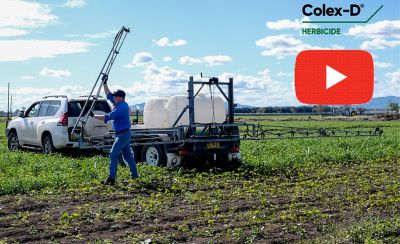Guy Sands, Colex-D Product Manager said “Colex-D is an ideal option in Australia because it allows farmers to take advantage of the robust weed control 2,4-D is known for, while significantly reducing off-target movement that has been a problem with older 2,4-D formulations.”
“The proprietary drift reduction technology in the Colex-D formulation is designed to eliminate droplets at the finer end of the spectrum, and generate more optimally-sized droplets. This maximises product performance and minimises the risk of off-target movement” Mr Sands says. “When Colex-D is applied according to the label, it offers an improved droplet spectrum which ensures the herbicide reaches the target weed. “
Colex-D and many common tank mix partners have undergone extensive wind tunnel testing to establish performance standards using a range of nozzle combinations common in Australia. He says “It is important to test the droplet spectrum when mixed with tank mix partners as these combinations alter the range of droplet size, sometimes not for the better. In some cases, mix partners did not pass our rigorous testing and will not be supported on the label”.
The Colex-D label contains application advice for a wide range of different nozzle types and operating pressures to ensure the product advantages are maximised. Corteva has thoroughly tested the labelled mix partners to ensure physical compatibility and field efficacy in Australian conditions.
Mr Sands said “the challenges of volatility, where the compound moves from the treated area after application, have also been addressed with the unique Colex-D formulation.
While traditional 2,4-D amine formulations break apart in the spray tank resulting in more volatile components, the novel choline salt in Colex-D stays associated and is much more stable in the spray solution and on the sprayed surfaces following application”.





